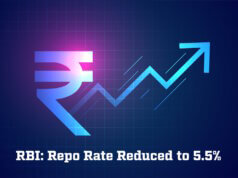The Union Minister for Power and New & Renewable Energy Shri R.K Singh visited the 2,000 MW Subansiri Lower Hydroelectric Project located in Arunachal Pradesh and inspected the Subansiri project construction sites. Expressing satisfaction with the review of the project, the Minister told that the importance of hydel projects has increased since round-the-clock renewable energy is not possible without hydro power.
The Government of Arunachal Pradesh has entered into MoUs with central public sector undertakings for 13 projects, which will amount to a hydroelectric capacity of 13,000 MW in Arunachal. These projects will bring in investment of around Rs 1.4 lakh crore in the state, resulting in quadrupling of per capita income.
The Minister informed that India’s hydro power capacity is 47,000 MW, which is 35 percent of our available hydro power potential. Developed countries however have utilized around 70 percent – 80 percent of their available hydro potential.
Shri Singh further informed that the country’s power demand grew by 20 percent in August, September and October 2023, relative to the previous year. The power demand is expected to double by 2030 and the total consumption, which is 1,600 billion units today, will increase to around 3,000 billion units.
As per the minister, the country currently has under-construction capacity in renewables at around 70,000 MW, while in thermal, it is 27,000 MW. Another 53,000 MW will be added to under-construction thermal capacity so that by 2030 the country will be in a position to meet the power demand.
Shri Singh said that India has become a world leader in energy transition and that India has been pursuing a path of responsible growth. In COP21 in Paris, we had committed to make 40 percent of our capacity to be from non-fossil-fuel sources by 2030; we achieved this target in 2021, nine years in advance. Hence, we are growing faster than developed countries. Developed countries have become developed by using fossil fuels. Hence, if we need to use fossil fuels for our growth, we will use it. Our per capita carbon emissions are one third of global average; while per capita greenhouse gas emissions of developed countries are three times that of global average. 80 percent of the carbon dioxide load in the atmosphere due to which there has been a rise in global temperature is due to the emissions by developed countries, while our contribution to the cumulative load is just 3 percent and our population is 17 percent of world population.











